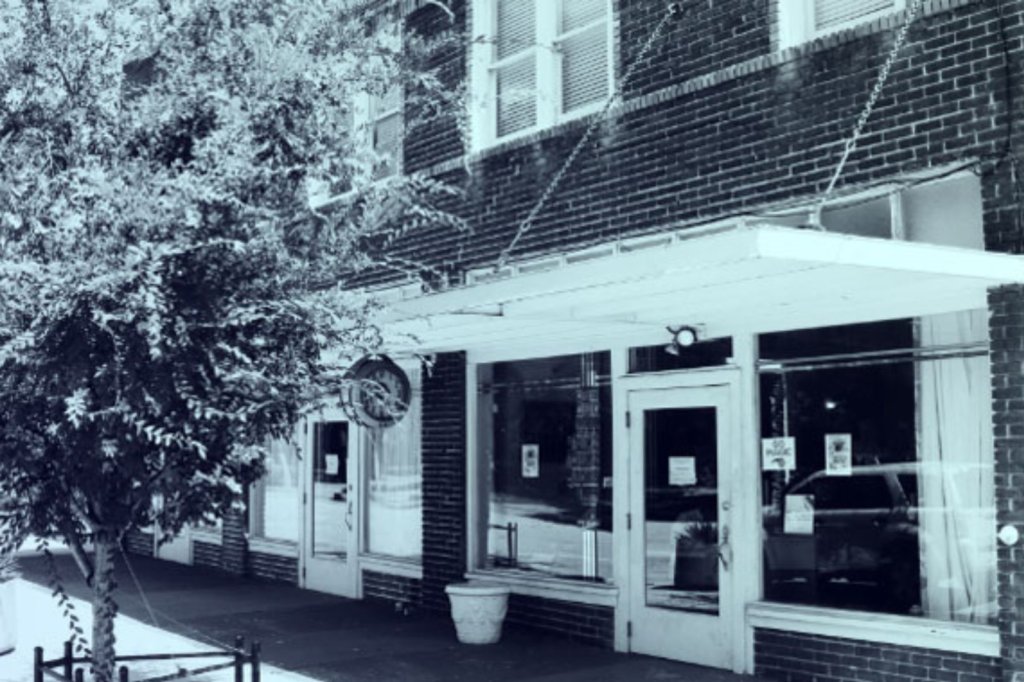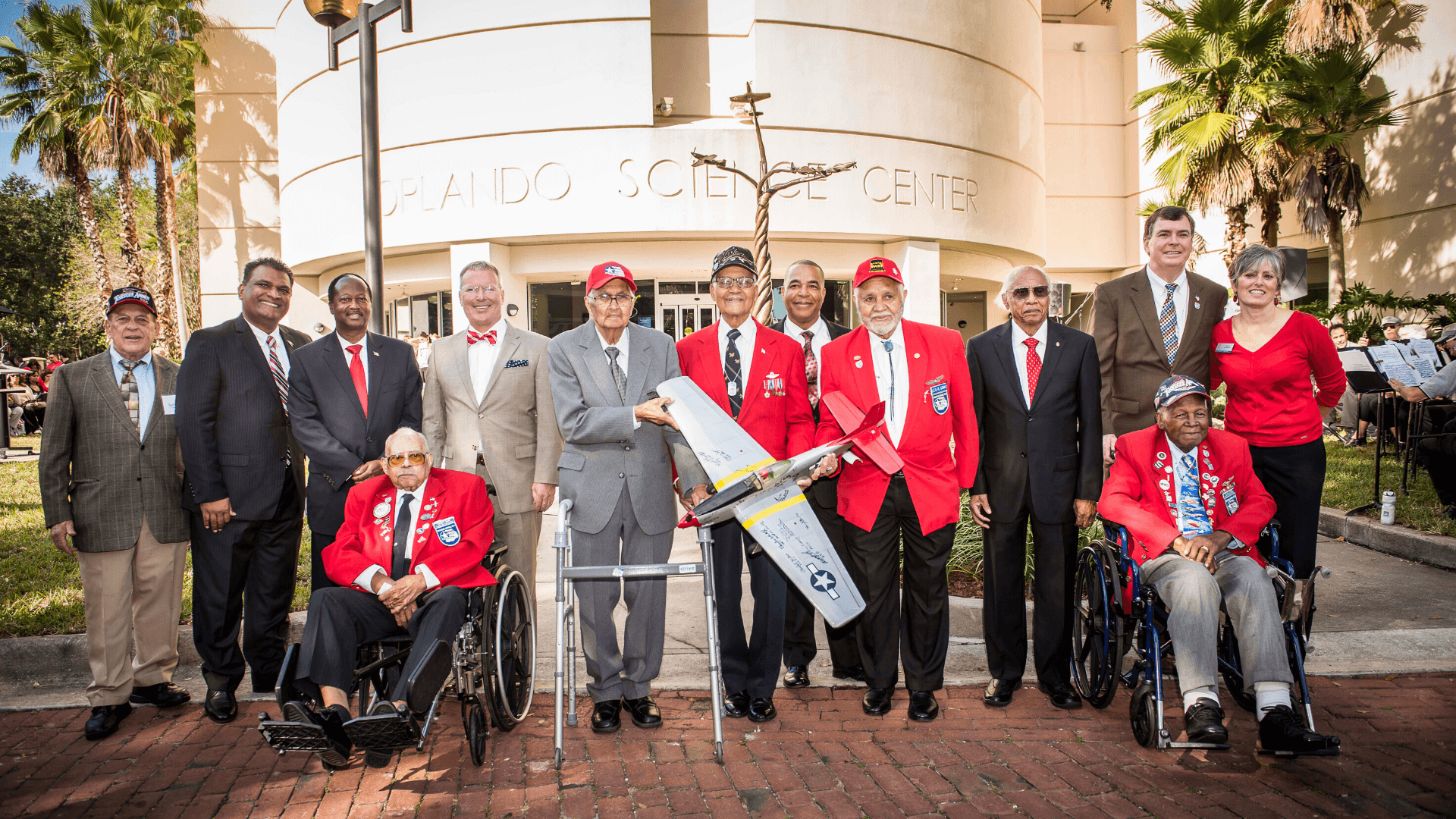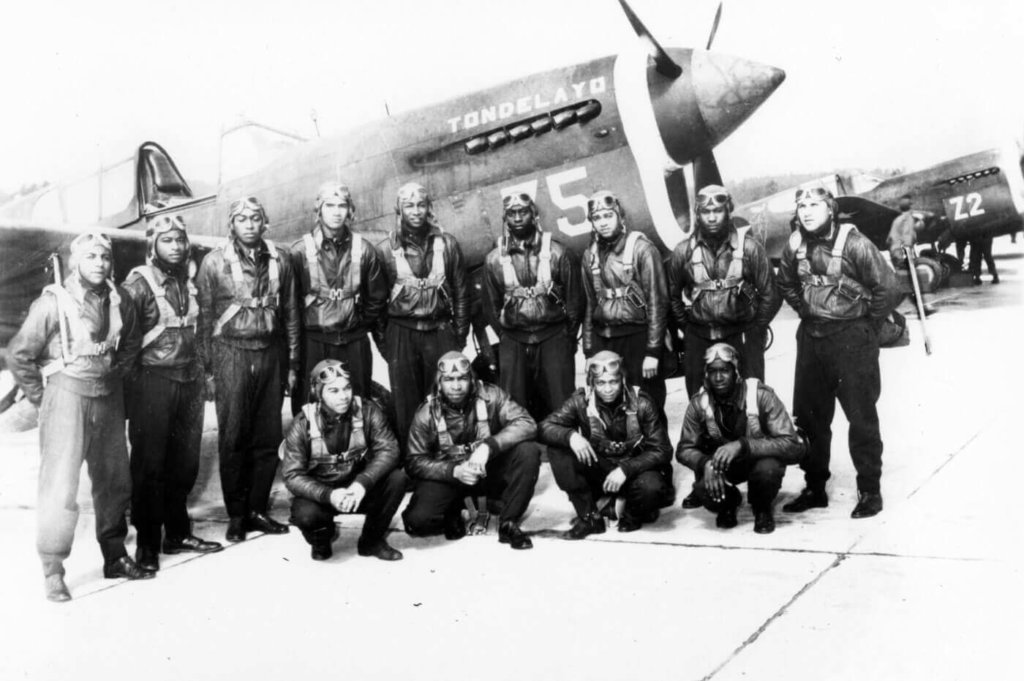Signature Monument Commemorates the First Black American Military Aviators
Orlando may be known for its vast array of entertainment and attractions, but there is also rich, diverse, and unique culture. Throughout the years, the community has come together to create and preserve Black history monuments, museums, landmarks, and more, here in Central Florida.
Since 2013, guests coming to Orlando Science Center from the Loch Haven Park entrance have been greeted by the Red Tails Monument, a 12-foot bronze spire leading up to four P-51 Mustang aircrafts in the “missing man” formation. The statue stands in honor of the bravery, passion, and sacrifice of the elite fighter group of Tuskegee Airmen known as the “Red Tail Angels,” nicknamed for the distinctive red paint on their aircraft propellers and tails.
The Tuskegee Airmen were the first Black military aviators in the United States armed forces. A total of 932 Black pilots trained at a segregated air base in Tuskegee, Alabama between 1941 and 1946. Of those, 356 were chosen to make up the elite 332nd Fighter Group, who would go on to be known as the Red Tails. They were sent to various European bases to fly escort for heavy bombers of the 15th Air Force during raids deep into enemy territory, earning an impressive combat record. Because they had one of the lowest loss records of any escort fighter group, bomber crews often requested to be escorted by the Red Tails. Of the 356 Red Tail pilots, 80 were killed, 32 were prisoners of war, and 17 were shot down, but evaded capture.
Before the Tuskegee Airmen, no Black American had ever been a United States military pilot. During World War II, many U.S. states still upheld Jim Crow laws, a series of racist legislation that enforced the “separate but equal” treatment of Black Americans. These laws were used as justification for blocking previous attempts by Black American soldiers to become pilots. The Tuskegee Airmen were subjected to systemic racism, prejudice, and discrimination both within and outside the army. In spite of these adversities, they trained and flew with distinction while simultaneously fighting for their own civil rights. Even after proving their worth as world-class pilots, the Tuskegee Airmen still encountered segregation and were not permitted to fly alongside their white counterparts. The United States Armed Forces remained segregated until 1948.
The Red Tail Pilots of the Tuskegee Airmen played a crucial role in preparing the nation for racial integration in the military. Their heroic example continues to inspire future generations to reach to the skies and realize that all things are possible, even in the face of extreme adversity.
The Tuskegee Red Tails monument is designed to inspire academic success in science, technology, engineering, and math fields, especially in aviation. With the understanding that diversity drives innovation, increasing the success of underrepresented and marginalized students in these fields is crucial in growing a STEM workforce that resembles the nation’s demographics at large.
The Tuskegee Red Tails statue stands in honor of the perseverance and success of the Tuskegee Airmen, and serves to recognize the vital contributions of Black Americans in United States history. The monument was funded by Syd Levy of United Trophy and dedicated by the City of Orlando, Orlando Science Center, and Vision of Flight, Inc.
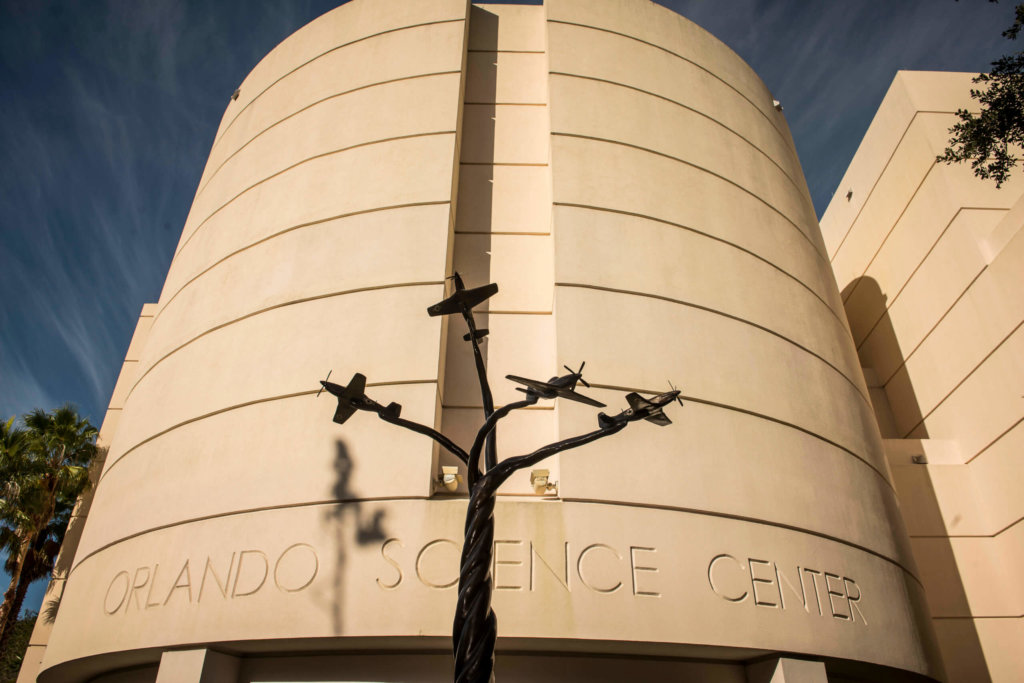
Explore more Black history monuments around Central Florida
This is by no means an exhaustive list of important historical locations in and around Central Florida. From the Ocoee Massacre marker to the Mary McLeod Bethune Home in Daytona, the Mount Moriah Church in Port Orange and the Zora Neal Hurston Museum in Eatonville, explore more than 40 sites significant to Black history in Central Florida with this interactive map.
Hannibal Square
Officially founded in 1881, Hannibal Square originally consisted of African Americans who worked for the South Florida Railroad and Winter Park’s wealthy families. On Oct. 12, 1887, it became the site of one of the country’s earliest Civil Rights marches, when Gus Henderson led a group of Black residents across the town’s dividing railroad tracks to vote in the election that officially incorporated Winter Park, including Hannibal Square. What’s more, two Black residents were elected aldermen, serving from 1887 to 1893.
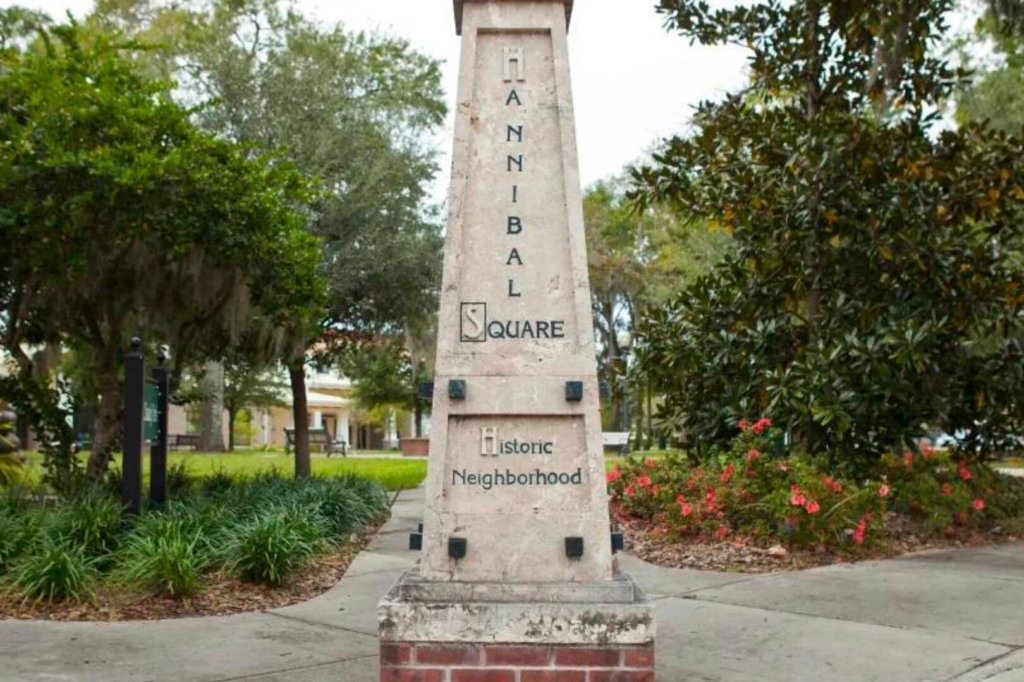
Tinker Field History Plaza
The original field and buildings at Tinker Field were dedicated in 1923. Named for Joe Tinker, many Baseball Hall of Famers played here, including Jackie Robinson, Rod Carew, Bert Blyleven, Hank Aaron, Babe Ruth, Joe DiMaggio, and Harmon Killebrew.
Dr. Martin Luther King, Jr. gave his only speech in Central Florida, “Integration Now,” on the Tinker Field pitcher's mound less than a month before his death in 1964.

Wells’built Hotel
In 1926, Dr. Wells constructed a hotel that provided lodging to African Americans during segregation when hotel rooms were not available to them in other areas. Famous guests include Jackie Robinson, Ella Fitzgerald, Count Basie, and Justice Thurgood Marshall. The Wells’Built Museum of African American History is now located here, featuring memorabilia, artifacts, and a guest room with authentic furnishings of the 1930s.
